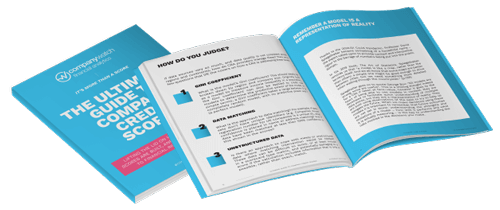Understanding the Financial Risk Landscape Shaping 2024

In volatile times, market shocks are common and unethical behaviour is increasing. Detecting financial risks early is crucial to protect your company.
At Company Watch, we provide unique tools to help you identify, assess and manage financial risk.
What is financial risk?
Financial risk is the uncertainty associated with financial investments and decisions. This could range from losing money on a stock investment to experiencing a significant loss due to a business failure.
Understanding and managing financial risk is crucial for individuals and businesses alike. By identifying potential threats and implementing strategies to mitigate them, you can protect your assets and achieve long-term financial stability.
How to mitigate financial risk
To deal with financial risk and make the right assessments, you need to know what the biggest financial risk factors are. Our host of powerful financial risk management tools can protect your business against fraud and boost your financial health.
But first, what are the top financial risk factors you should be looking out for in 2024? We’ve outlined the top risks you need to be vigilant of:
- Bad debt and insolvency
- Fraud
- Data accuracy
- Supply chain instability
1. Bad debt and insolvency
When you are vetting a potential client, assessing bad debt and the risk of insolvency is key to mitigating financial risk. The pandemic resulted in unprecedented levels of borrowing as businesses fought for survival. Companies taking on debt became the new norm, as did the risk of insolvencies.
This means that it won’t always be easy for you to spot financial risks. This is particularly true in the current economic climate. Currently:
- In the UK, 1.5 million SMEs are struggling with bad debt
- The average bad debt has jumped 61% since 2022 – from £10,000 to £16,000
- 37% of SMEs struggle with cash flow for business growth
- 55% say that customers are taking longer to pay them than in 2022
High interest rates and signs that the British economy is slowing mean indebted businesses will struggle to pay back loans. The result - increased insolvencies and more financial risk. July 2024 saw 2,361 company insolvencies, which is 17% higher than the number in June 2023.

At Company Watch, we have a range of tools to help our customers keep abreast of these financial risks. We monitor the finances of over 5 million UK companies and can help you spot bad debt before it becomes an issue.
2. Fraud
According to the UK Finance fraud report, £1.17 billion was lost to fraud in 2023. 1% of this was a result of abuse of the Covid-19 financial support schemes. In July 2024, a businessman was found guilty of COVID-19 related loan fraud.
The government has faced scrutiny over lax checks before issuing these loans. Many businesses applied for loans they weren’t entitled to, and others applied for the same loan many times. Therefore, we can expect a wave of prosecutions like the most recent one as the government tries to recoup some of this money.
Working with a fraudulent company can cause irreversible reputational damage, in addition to increasing financial risk. We’re here to make sure that doesn’t happen. Key indicators such as financial distress and unusual financial activity are early warning signs of business fraud. Our tools allow you to stay on top of fraud detection:
- Our most powerful fraud detection tool, Vigilance™ allows you to monitor and flag potential fraud, company filing inconsistencies, and anomalies across multiple critical triggers. This immediately gives you a leg-up in the fight against fraud and helps you mitigate financial risk. Learn more about Vigilance™.
- Our enhanced director matching tool can uncover hidden company directors with past fraud convictions.
- Our TextScore® tool uses machine learning to analyse a company’s records for indicators of fraudulent activity.
3. Data accuracy
The amount of data businesses have to deal with is increasing exponentially. The task of harvesting and processing this data is a daunting one, and businesses are looking to AI to solve the problem. This, in turn, creates its own problem.
Leaving this process to AI means businesses run the risk of losing sight of their financial risks and decisions. It becomes impossible to understand why certain business decisions are being made. This is a risky tactic.
The problem is exacerbated due to issues with the information used to make these calculations:
- As of February 2024, 1.1 million UK companies have failed to meet the HMRC self-assessment deadline for filing accounts.
- 2 million more companies haven’t filed since 2022 when the effects of the pandemic on business were still evident.
This makes it very difficult for businesses to get a clear picture of a company's current performance, which affects accurate decision-making.

We’ve designed our tools with these issues in mind. They will avoid data overload, find the relevant information quickly, and provide you with a clear and accurate picture of a company's risk:
- SearCHeD and TextScore® can be combined to pick out relevant data and sentiment analysis from company reports.
- Experiments allows you to model and forecast company accounts. You can even input management forecasts and interim filings. If a company you are working with hasn’t filed accounts for a while, you can get an up-to-date accurate picture of their current financial health using our Experiments tool. Run stress-tests and model future business scenarios in a few clicks.
- Vigilance™ checks all available data at Companies House for anomalies and inconsistencies to ensure that the data you are working with is legitimate.
- Data Search enables you to filter the entire UK company population to find companies that fit a certain profile. This can be used to locate risks within your portfolio and spot potential opportunities.
4. Supply chain instability
The aftermath of Brexit followed by the pandemic caused serious supply chain disruption. Vacancies reached record highs between November 2021 and January 2022 leading to serious staff shortages.
Supply chain instability has rumbled on and there are several supply chain risks to look out for in 2024. The instability continues as the war in Ukraine led to international sanctions, the disruption of trade routes, and an energy crisis. Supply chain disruptions look set to continue throughout the rest of 2024:
- The continuing conflicts in Gaza and Ukraine are showing no signs of ending and will continue to have negative effects on supply chains. This makes supply chain risk management crucial.
- Along with geopolitics, global economic instability continues to be one of the biggest causes of supply chain disruption. With various political and climate uncertainties, economic instability will continue to be a major factor in 2024 and 2025.
- In 2024, so far, there have been 9,478 supply chain cyber-attacks. As cyber criminals become more sophisticated this is set to continue to rise.
Supply chain disruptions can have a significant impact on a company’s bottom line. Production and shipping costs often rise because of disruption. Businesses lose out on sales and customer satisfaction drops. Some companies can weather these storms, but you must be wary of those who find themselves in trouble.
In turbulent times, hyper-vigilance must become the new norm. It is vital to prepare for whatever shocks might lie ahead. We have tools like Forecast View™ to simulate supply chain shocks. It tests different future economic scenarios and how they affect the stability and risk profile of a company.
Our host of powerful tools work together to help you predict future outcomes and mitigate financial risk with confidence. You can try them out for free and discover how they can help you improve your business’s financial health.



